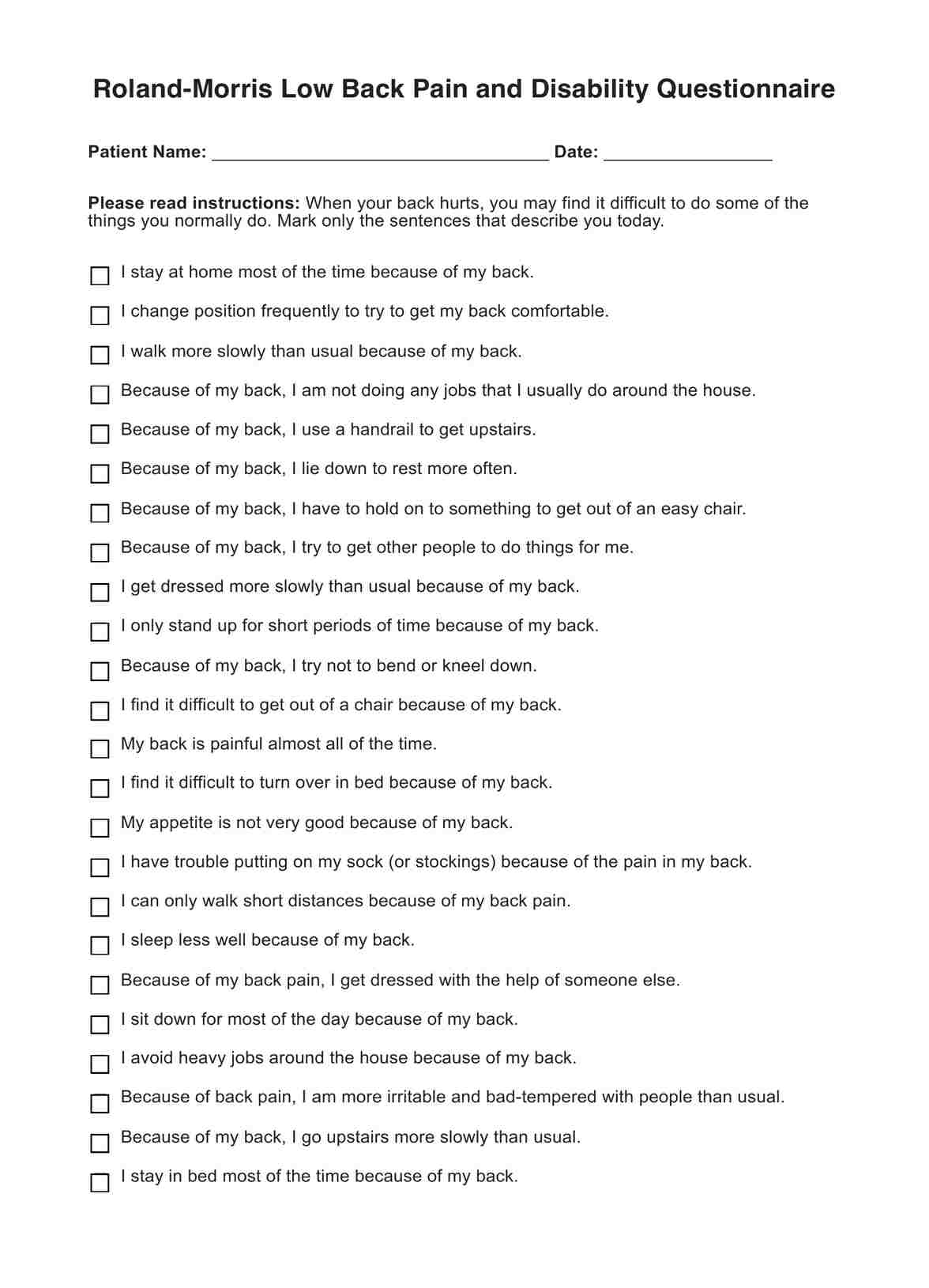The RMDQ is mainly used by healthcare professionals, including doctors, physiotherapists, and researchers studying low back pain.

Roland Morris Disability Questionnaires
Delve into the Roland Morris Disability Questionnaires, a vital tool for evaluating the physical disability caused by low back pain. Free PDF download available.
Roland Morris Disability Questionnaires Template
Commonly asked questions
The RMDQ is used to assess the disability level in patients experiencing low back pain and to track changes over time, especially before and after treatment or rehabilitation measures.
The RMDQ is a self-assessment tool. The patient checks off the items that apply to their current condition. Each checked item is scored as 1. The total score, ranging from 0 to 24, is then calculated to measure the individual's disability.
EHR and practice management software
Get started for free
*No credit card required
Free
$0/usd
Unlimited clients
Telehealth
1GB of storage
Client portal text
Automated billing and online payments











